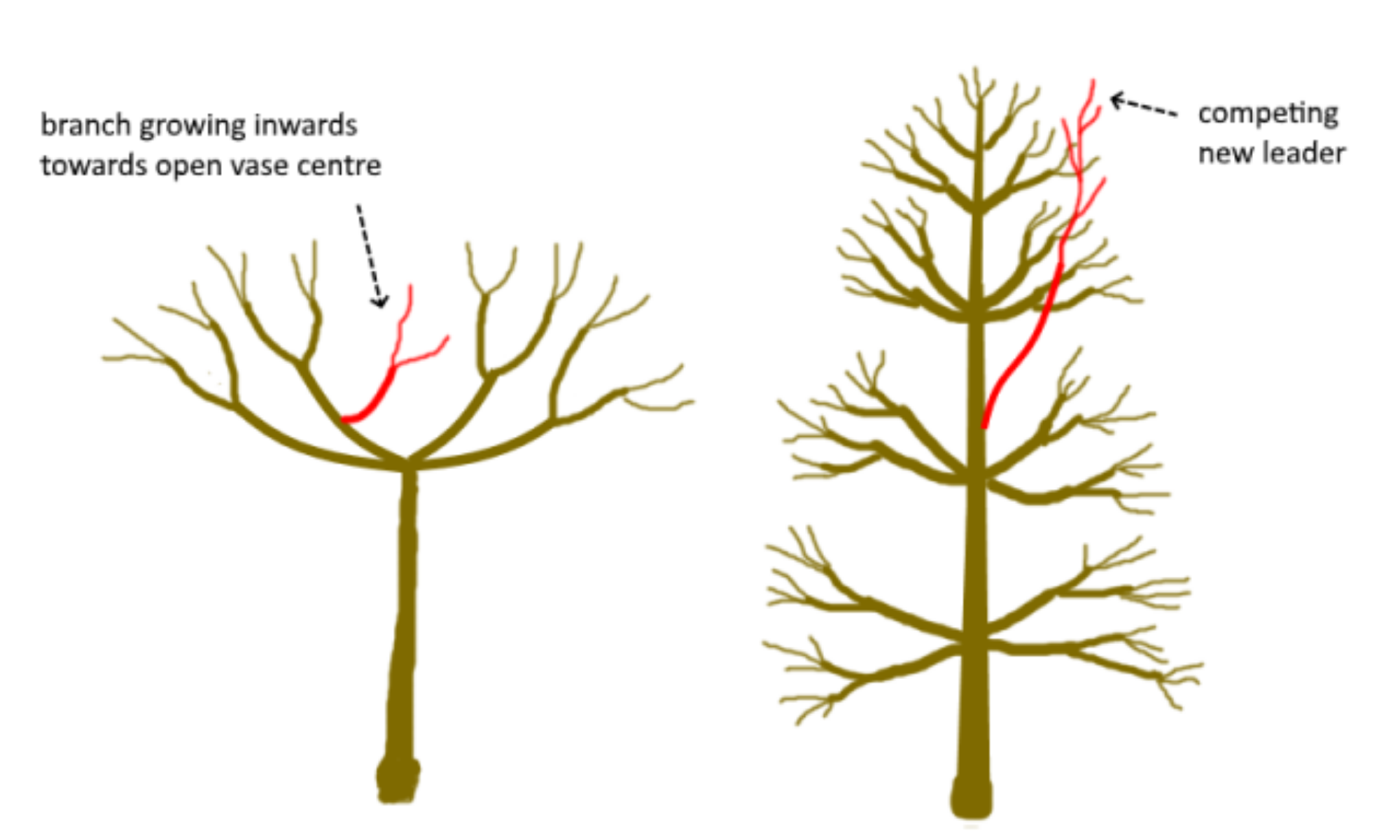1. Initial Steps in Fruit Tree Pruning
Before adjusting the shape or size of the tree, there are important steps that must be carried out:
- Remove dead, diseased, or broken branches to promote good plant hygiene.
- Eliminate crossing branches to prevent rubbing that could cause wounds and invite disease.
- Prune suckers, water sprouts, and upward-growing branches to maintain the tree’s vitality and structure.
By removing damaged or problematic growth first, you prevent the spread of diseases and allow the tree to heal properly from pruning cuts. Suckers growing from the rootstock, for example, need to be pruned since they sap energy from the main tree and are usually unproductive. Removing water sprouts is also crucial, as they grow straight up and distort the tree’s natural shape.
2. Maintaining Tree Shape
Once the tree is free of unwanted growth, you can focus on preserving its form:
- Remove inwardly growing branches on a vase-shaped tree to keep the center open for air circulation and light.
- Prune additional leaders in trees trained with a central leader form to maintain a single, strong leader.
These steps ensure your tree retains its shape, improves air circulation, and supports even fruit ripening.
3. Renewing Fruiting Wood and Managing Size
The final step in pruning is aimed at renewing fruiting wood and keeping the tree at a manageable size. The rule of thumb is to cut back new growth by half, making your cuts at a 45-degree angle, about 6mm (1/4 inch) above an outward-facing bud. This method not only maintains the size of your tree but also encourages the development of healthy fruiting branches.
Why prune at all? Without regular pruning, fruit trees can alternate between years of overproduction and poor fruit quality. By reducing new growth, you balance fruit production and allow the tree to concentrate its energy on fewer, better-quality fruits.
Trees with Special Pruning Needs
Not all trees follow the same pruning guidelines. Apricots, for example, should never be pruned in winter due to the risk of disease entry. They should be pruned in late spring or early autumn during dry weather to prevent infection. Other trees like figs, persimmons, and pomegranates require specialized pruning techniques.
By following these steps each year, your fruit tree will not only remain productive but will also be easier to manage when it comes to harvesting, spraying, or netting.
🍂 Continue caring for your fruit trees by feeding them balanced fertilizer in spring and autumn, and they’ll reward you with healthy, abundant harvests for years to come! 🍎
